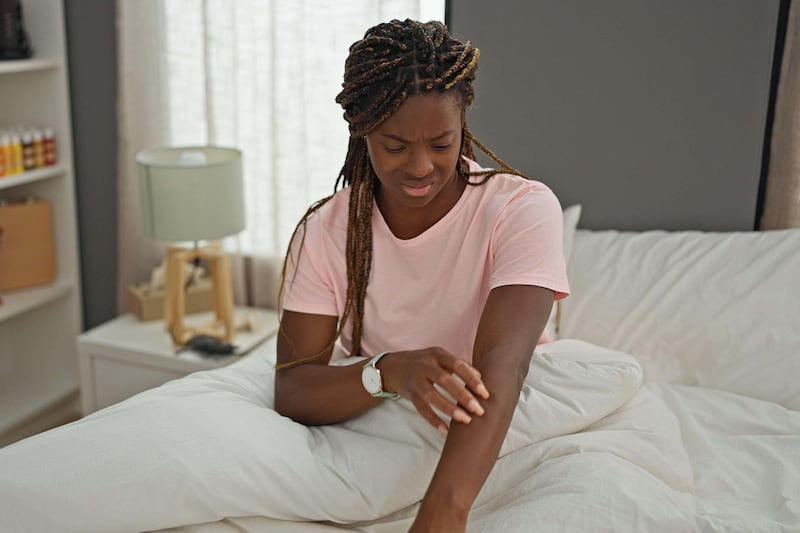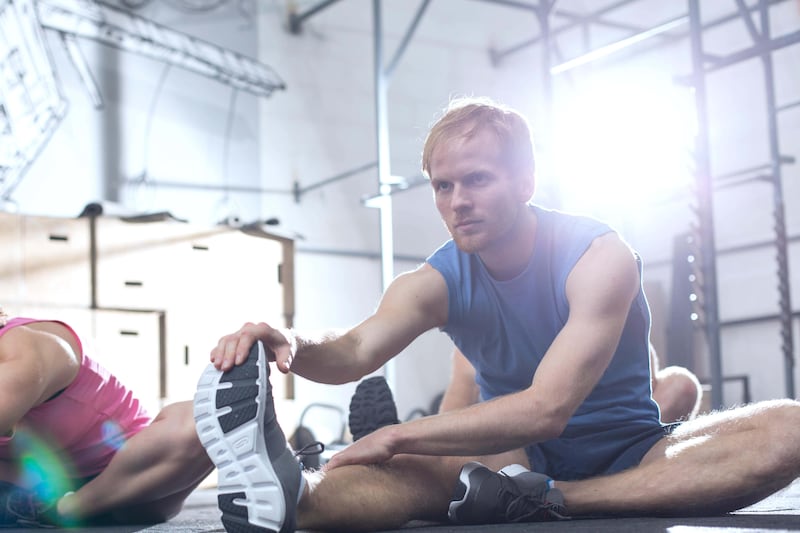FOR many years doctors have used body weight as a key indicator of overall health, but it's now clear that some people can be slim yet unhealthy, or even overweight but apparently in rude health (although this still divides expert opinion).
Now research by the Mayo Clinic in the United States suggests health can be more accurately defined - and longevity predicted - by four other health parameters: aerobic fitness, muscular strength and endurance, flexibility and body composition. Experts believe these are more useful than any measurement of your weight.
These are all things you can check yourself at home - and, importantly, by working to improve your scores, you can boost your health and resistance to illness as you get older.
We asked leading experts for the best DIY at-home tests to check on these four health parameters - with tips for how best to work to improve them.
1. AEROBIC FITNESS MEASUREMENT
Aerobic fitness measures your ability to take in and use oxygen, and is closely linked to overall health.
"The process of taking oxygen and using it to produce energy for your muscle cells integrates many of the body's most important systems including muscles, heart, lungs and blood vessels, and as such it is a good indicator of a broad range of your bodily functions," explains Dr Stuart Gray, a senior lecturer in exercise and metabolic health at Glasgow University.
Scientists measure aerobic fitness using a 'VO2 max' score, the maximum amount of oxygen your body can utilise during exercise. This score can be improved through challenging your lungs and heart with regular exercise.
The higher your score, the better as it suggests your body is more efficient at taking oxygen from the air and delivering it to your muscles. The more oxygen they get, the more nutrients you can transform into the fuel your muscles use to perform.
Do one of the following three tests to measure your current level of aerobic fitness and then repeat the tests monthly to monitor your progress.
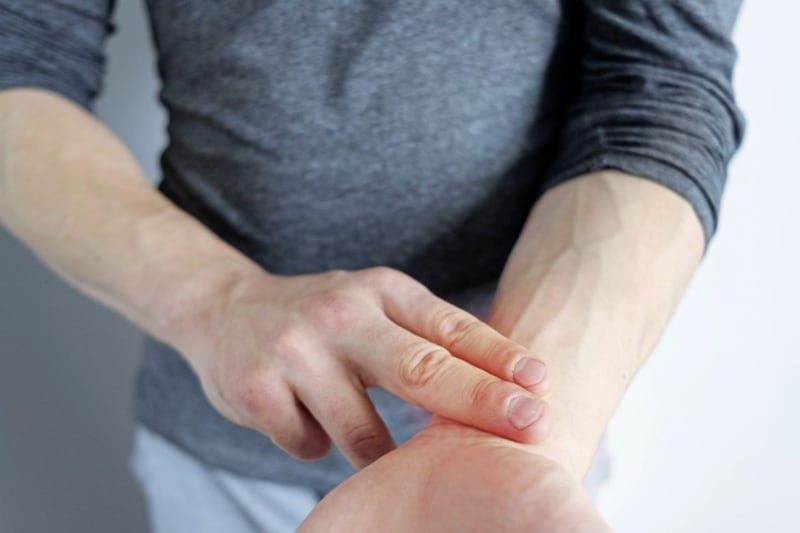
TEST 1: CHECK YOUR RESTING HEART RATE
The number of times your heart beats per minute when you're at rest provides a snapshot of how well the heart muscle is functioning, with a slower beat (usually) a sign of stronger heart health and a more efficient cardiovascular system.
Many studies have linked a high resting heart rate with a shortened life expectancy; a faster heartbeat indicates that your heart is having to work harder, suggesting your cardiovascular system isn't working at its best.
Age, chronic sleep deprivation, excess weight, smoking and prolonged stress can all cause your resting heart rate to speed up. Regular exercise tends to slow it because it builds strength in the heart muscle, meaning it can pump a greater amount of blood with each heartbeat.
The best way to test your resting heart rate is lying in bed, having just woken up. Clear away all distractions and don't speak during the measurement. Now simply place your index and middle fingers on either the side of your neck or the inside of your wrist. Set a timer for 15 seconds and count the beats, then multiply the number of beats by four.
Take your measurement more than once on consecutive mornings to get a baseline figure, then repeat the exercise each month.
SCORES TO AIM FOR:
Note: Women's (smaller) hearts naturally beat slightly faster than men's. If you're in your…
40s: 57-66 beats per minute for men; 60-69, women.
50s: 58-67, men; 61-69, women.
60s: 57-67, men; 60-68, women.
70s: 56-65, men; 60-68, women.
TEST 2: THE STEP TEST
This simple test, which was developed at Harvard University in 1942, is widely used as a measure of physical fitness and cardiovascular strength as it measures the rise in your heart rate caused by exercise and the speed at which your heart rate recovers afterwards. The idea is that a healthy heart will cope better with the exertion - not speeding up too much and returning to normal swiftly afterwards.
Set a timer to three minutes: step up and down off the bottom step of your stairs (follow a pattern of 'up, up' then 'down, down' so both feet are on the step before you step down) at a rate of 24 steps per minute for three minutes (to help you set the right pace, set the interval timer on your phone to bleep 24 times per minute or say 'one elephant' for up and 'two elephants' for down to approximate the correct speed).
After three consecutive minutes, rest in a chair for one minute, then immediately take your pulse.
SCORES TO AIM FOR:
40s: 90-106 beats per minute for men; 96-119, women.
50s: 93-112, men; 101-124, women.
60s: 96-115, men; 103–126, women.
70s: 102-118, men; 105-130, women.
TEST 3: THE WALKING TEST
Use a car to measure exactly one mile (1,609 metres) of unobstructed path on flat, even ground, or go to a running track (one mile is four laps around the innermost lane). After warming up (march on the spot for a few minutes) start a stopwatch and set off to walk that mile as fast as you can. At the end, record how long it has taken you.
This test was devised in 1986 by physiologists and cardiologists at the University of Massachusetts to measure VO2 max without lab equipment, as it evaluates the capacity of your lungs in relation to the volume of exercise you can tolerate.
"By exercising regularly and repeating this test every two months you should see your times improve, or at least plateau rather than decline naturally with age," says Dr Gray.
SCORES TO AIM FOR:
40s: 13 minutes, men; 14 mins, women.
50s: 13.24 mins, men; 14.42, women.
60s: 14 mins, men; 15, women.
70s+: 15 mins, men; 18, women.
You can also use the time it took you to walk that mile to work out your VO2 max by measuring your heart rate immediately after you finish the walk. Put both figures into an online calculator (such as this one: brianmac.co.uk/rockport.htm).
VO2 MAX SCORES TO AIM FOR:
40s: 39+ for men; 34+, women.
50s: 36+, men; 31+, women.
60s: 32+, men; 28+, women.
70s: 29+, men; 25+, women.
WHAT TO DO: The best way to improve aerobic health is to find something you enjoy "which you can build into your daily life, long term", says Dr Gray.
He recommends regular cycling, swimming, running or walking - but it can take three to six months before you notice improvements in aerobic health.
Because aerobic health naturally declines with age, plateauing on your scores over time can actually be a mark of success.
2. MUSCLE STRENGTH AND ENDURANCE
Muscle strength and endurance is key to preventing falls, and as Naveed Sattar, a professor of metabolic medicine at Glasgow University, says, it's also important for general health.
"With increased activity, blood vessels become more pliable and so blood pressure can often lower and the heart then finds it easier to pump blood around the body, improving ability to supply oxygen to tissues," he explains.
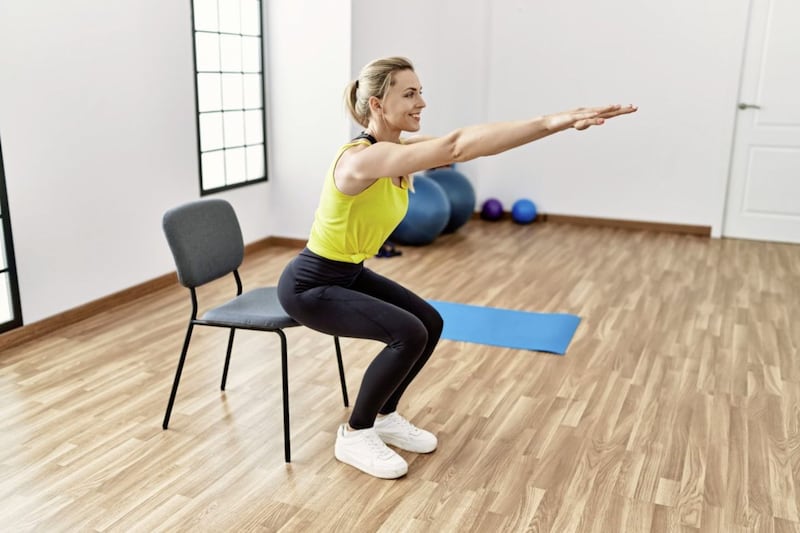
TEST: THE 30-SECOND SIT-TO-STAND TEST
This measures the number of times you can rise from and sit back on to a chair in 30 seconds, and is a standard way of measuring leg strength and endurance.
"It's a great indicator of muscular strength and endurance because it integrates coordination, power and balance," says Dr Gray.
Sit on a dining room chair, your feet on the ground, your arms folded. Set a stopwatch, then stand (without using your hands or arms for support) and immediately sit again gently as many times as you can in 30 seconds.
"When you find this easy, you can increase the challenge by progressing to a softer, lower chair which demands greater strength and balance to get up and down from without support," says Dr Gray.
Dawn Skelton, a professor of ageing and health at Glasgow Caledonian University, says that her team regularly uses tests like these to assess fitness levels in older populations.
"This test is a great measure of lower limb strength which is needed to climb stairs, walk distances, get out of a chair, bath or car and rise from the floor," she says.
Professor Skelton's team devised the following indicators.
SCORES TO AIM FOR:
50s: 15-21, men; 12-20, women.
60s: 12-18, men; 10-16, women.
70s: 10-17, men; 10-15, women.
80s: 8-13, men; 9-13, women.
WHAT TO DO: Dr Gray recommends short bursts of activity using resistance bands (an inexpensive length of latex used to do exercises) or body weight (such as squats or press-ups). Just four or five press-ups a day "in any position that is comfortable is enough to help to maintain upper body strength", adds Professor Sattar.
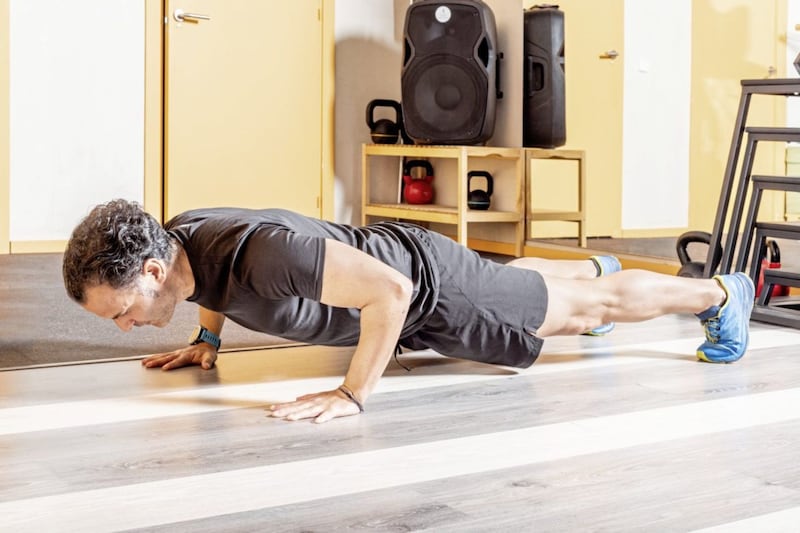
Build the strength you need to perform proper press-ups by trying the same action standing against a well, then progress to putting your hands on a kitchen worktop, and ultimately move to the proper press-up position on the floor, with your weight on your knees rather than your toes.
Dr Gray says the added bonus is that unlike other areas of fitness, "you will see improvements in strength very rapidly, which is hugely rewarding".
3. BODY COMPOSITION
One important indicator of health is body composition, the percentage of fat, bone, water and muscle in your body. The key is keeping your fat percentage relatively low, because excess body fat can lead to type 2 diabetes, heart disease and other problems.
The most widely used measure of body composition has been body mass index (BMI). But it doesn't differentiate between fat and muscle, and now, increasingly, studies show that the fat that we carry around our abdomen is a more important indicator of health than BMI or body weight.
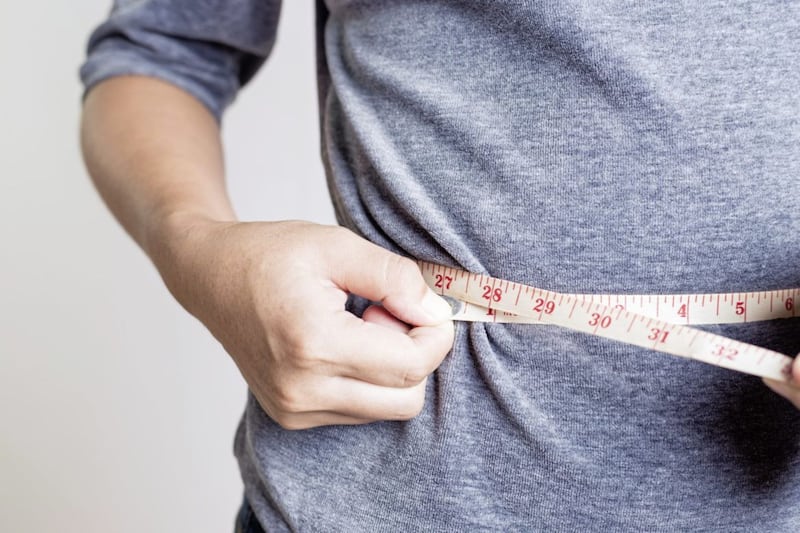
TEST 1: MEASURE YOUR WAIST-TO-HEIGHT RATIO
Health watchdog the National Institute for Health and Care Excellence now says that people should be encouraged to measure their own waist-to-height ratio.
First measure your waist. Wrap a measuring tape around your body at the midpoint between your lowest rib and your hip bone, usually just above the navel. Relax and don't suck in your tummy.
Your ratio figure is this waist measurement in inches divided by your height, also in inches. A healthy waist-to-height ratio is classed as 0.4 to 0.49; one of 0.5 to 0.59 is thought to put people at increased risk of health issues; while 0.6 or more puts them at the highest risk.
It means a woman who is 5ft 4in tall with a waist circumference of 29in would have a healthy ratio. But a 32in waist would push her into the unhealthy range.
TEST 2: THE STRING TEST
Studies show a good indicator of health is keeping your waist measurement at 50 per cent of your height. Cut a piece of string to exactly the same length as your height - fold the string in half and wrap it around your waist, half way between your hip bone and your lowest rib. Ideally the two ends of string should meet.
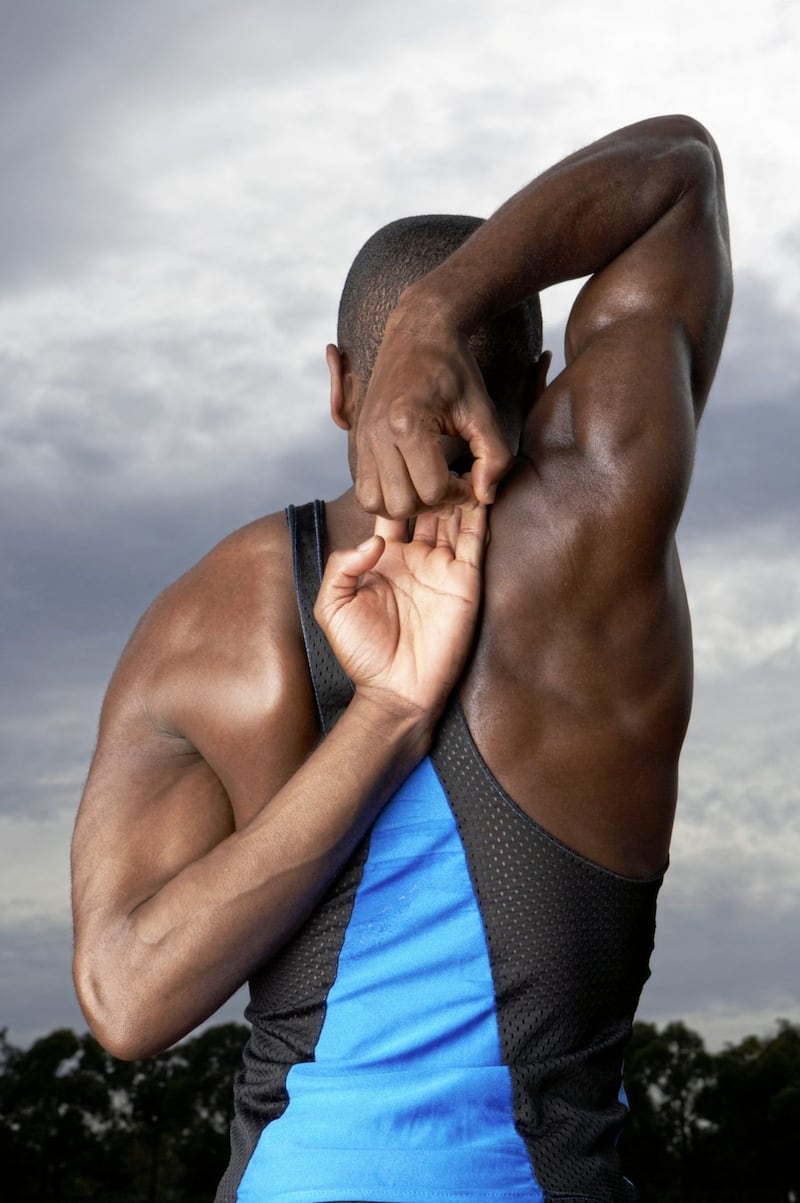
4. FLEXIBILITY
We become less flexible with age, but the degree to which we lose flexibility can be an indicator of failing joint, muscle and tissue health.
Professor Skelton explains: "It really is a case of use it or lose it. Flexibility is something we should all be working on daily. Regularity is key."
A good range of movement ensures blood supply to the joints and it stops inactive muscles shortening or lengthening, which can pull the spine and joints out of place. Check your upper body flexibility with this test.
TEST: THE 'BACK SCRATCH'
Shoulder flexibility is important for everyday tasks such as brushing our hair. Professor Skelton adds: "We also all need good shoulder function to lift ourselves out of the bath, or to push ourselves up off a bed in later life.
"And if you trip, you need to be able to reach out and grab something - shoulder flexibility is often the key difference between a trip becoming a fall."
Place one hand behind your head and back over the shoulder and reach as far as possible down the middle of your back, your palm touching your body and the fingers directed downwards. Place the other arm behind your back, palm facing outwards and fingers upward and reach up, attempting to touch or overlap the middle fingers of both hands.
Ask someone to guide your hands so they're aligned, and measure the distance between the tips of the middle fingers. A minus (-) score means you couldn't touch the fingers of both hands; a plus (+) score means your hands overlapped.
SCORES TO AIM FOR:
50s: -10cm to 1cm, men; -5cm to 7cm, women.
60s: -17cm to -2cm, men; -10cm to 5cm, women.
70s: -20cm to -5cm, men; -12cm to 2cm, women.
80s: -25cm to -7cm, men; -17cm to -2cm, women.
© Daily Mail




